Fermented compost: Cannabis and Bokashi
List of contents
Along with increased ecological awareness, there’s been a growing interest in organic farming methods, which, besides being environmentally friendly, have a much smaller carbon footprint than other types of cultivation, especially regarding plant nutrition and pest prevention.
Following this trend, you can now disregard mineral fertilizers and use organic nutrients, which already helps - a lot - to protect the environment. However, you can do much more, such as producing your own 100% organic fertilizer with waste from your garden or kitchen, as well as from other crops and agricultural activities. This way, you won’t make those plastic bottles filled with compost travel thousands of miles to get to your home, and instead you can recycle your own waste while obtaining a high-quality fertilizer.
In our article on how to make your own compost, we explained a good way to recycle vegetable waste and harness it for your crops. Today, we’d like to introduce you to another method originated in Japan known as Bokashi that produces even better results in less time. We tell you everything about it below.
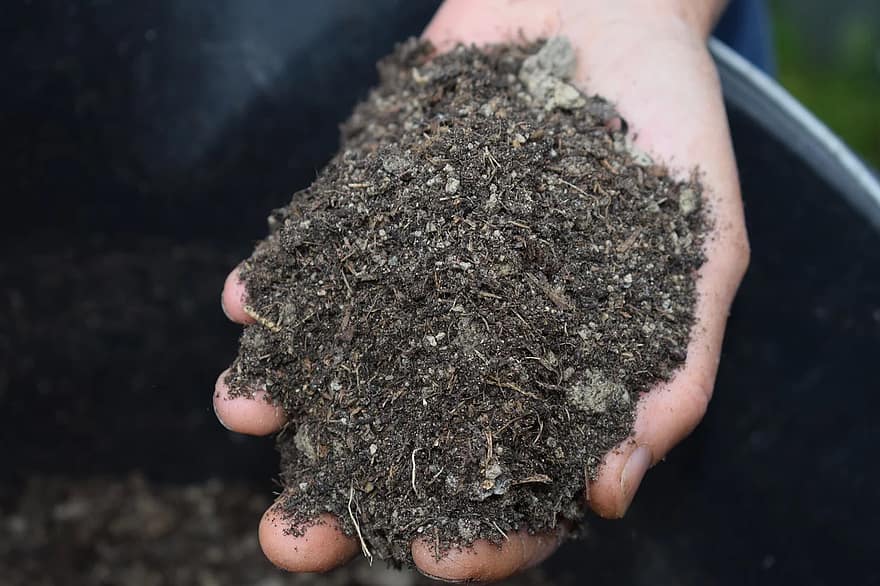
The origins of Bokashi composting
You might have heard of EM or effective or friendly microorganisms. This term was coined in 1980 by Dr Teruo Higa - a Professor Emeritus from the University of the Ryukyus in Okinawa, Japan - after discovering a combination of microorganisms that favoured plant growth. Soon after, EM technology was applied to composting with amazing results... They had achieved a high-quality fertilizer in just a couple of weeks!
Originally, Bokashi was anaerobically made with a mix of vegetable waste (organic matter) and an EM inoculant (fermentation accelerator) inside an airtight container. In this way, the existing anaerobic bacteria (usually lactobacillus) start the decomposition process, which thanks to them is much faster than with traditional composting.
Over the years, and mainly due to a huge demand from farmers all over the world, the aerobic Bokashi technique was developed. This method involves allowing oxygen in (organic matter is not packed in hermetic containers). Each system has its own pros and cons, although it’s obvious that the traditional way is the best option for the cannabis homegrower. Nevertheless, we’ll explain both methods so you can choose the one that best suits your individual needs.
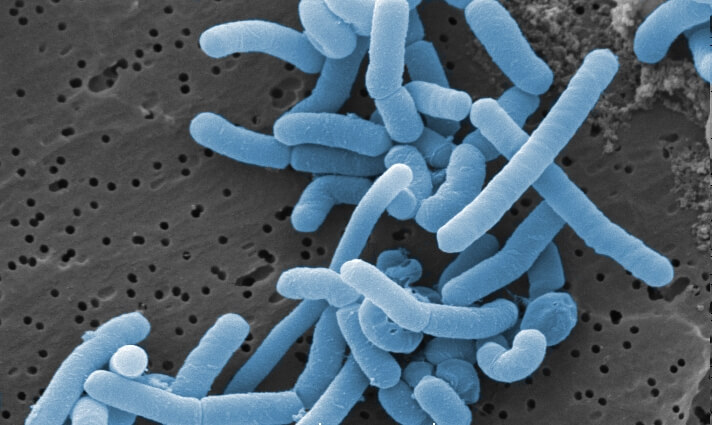
Fermented fertilizers
Broadly speaking, this compost is the result of a controlled process of semi-decomposition of organic matter due to the presence of different microorganisms (some of which already exist in the organic matter). As you have seen, this process takes place with or without oxygen; in other words, it can be aerobic or anaerobic.
The outcome of this partial decomposition is what is known as Bokashi or Bocashi, a product containing slow-decomposing macro and micro-nutrients and a large number of micro-organisms that are beneficial for the plants and the soil; in other words... the whole package for your organic garden!
On top of self-sufficiency in terms of fertilizers, this system offers many more advantages than other methods. Let's see the most important:
- The fermentation doesn’t produce any toxic gases; and better still, no unpleasant odours!
- You can make only the quantity you need, saving a lot of storage space compared to other fertilizers.
- Thanks to the soil biological inoculation and the boost derived from the beneficial microorganisms reproduction, the occurrence of pathogens is regulated and limited.
- The time required is significantly shorter than with composting, as is the cost of making it.
- Complete plant nutrition and soil inoculation with beneficial microbial life.
- Activation of natural phytohormones and phytoregulators.
- Great flexibility when replacing many ingredients; and the alternatives are very easy to find.
- Increased carbohydrates, amino acids, organic acids, and enzymes availability for the plants.
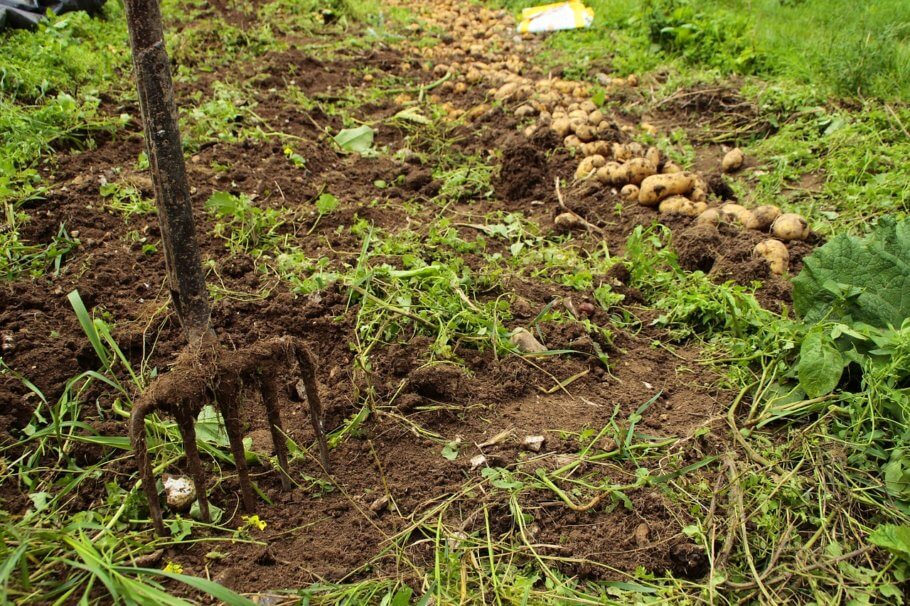
Different ways to make Bokashi
Just as there are different Bokashi recipes in terms of ingredients, there are also several preparation methods that may differ in some important aspects. However, there are two main ways to do it: one which is very similar to traditional composting (organic matter heaps protected from the sun and the rain and turned daily), and the classic way, with very little oxygen and in closed containers where the mixture gets fermented.
This way, and as we’ll see next, you can obtain an excellent organic compost simply by using kitchen scraps. You’ll save a trip to the garbage bin while getting a first-rate fertilizer without any bad smells!
Aerobic Bokashi
As the name suggest, this process requires some oxygen during fermentation. Very popular in Latin America, it’s the perfect option for large-scale growers who need huge amounts of fertilizers and faster fermentation. However, due to the high temperatures reached during the process, the organic matter must be turned daily in order to avoid decay, which entails more dedication and effort. Below you’ll see the ingredients most commonly used and their alternatives:
- Chicken manure: It represents the greatest contribution of nitrogen, a vital macronutrient for cannabis cultivation. However, it also provides other minerals such as phosphorus, potassium, magnesium, calcium, manganese, iron, zinc, copper and boron. In addition, and depending on its origin, it might contain beneficial microorganisms to a greater or lesser degree. The manure shouldn’t be rotten or contain antibiotics, which would restrict the fermentation process. Some growers replace it with sheep, rabbit or goat manure.
- Yeast: Every fermentation process needs some type of microbiological inoculation to get started. You can use bread yeast, forest soil or, of course, Bokashi, if you already have a small amount. Usually, yeast is still added on top of forest soil or Bokashi, to boost the process. If you have some Bokashi, you should prioritize its use in order to protect the forest soil. Yeast can be replaced by fermented corn grains or fermented cane juice.
- Rice husks: Just like coal, rice husks improve the soil’s physical structure, increasing its nutrients oxygenation, absorption and filtration. It also increases microbial activity, which stimulates root growth, and it’s a great source of silicon, an important chemical element for plant development, as well as of other basic nutrients (P, K, Ca, Mg). Rice husks can be replaced by other crops waste (straw, etc.) properly ground, as well as weather worn and tannin-free sawdust.
- Honey or sugar cane molasses: The main energy source for the fermentation process. As you probably know, this is real "food" for microorganisms, and also very rich in basic nutrients for your plants. To assist its application, molasses is often dissolved in water at about 40°C, prior to preparation. If you can’t find it, it can be replaced by panela (same weight) or sugar cane juice (2 litres per litre of molasses).
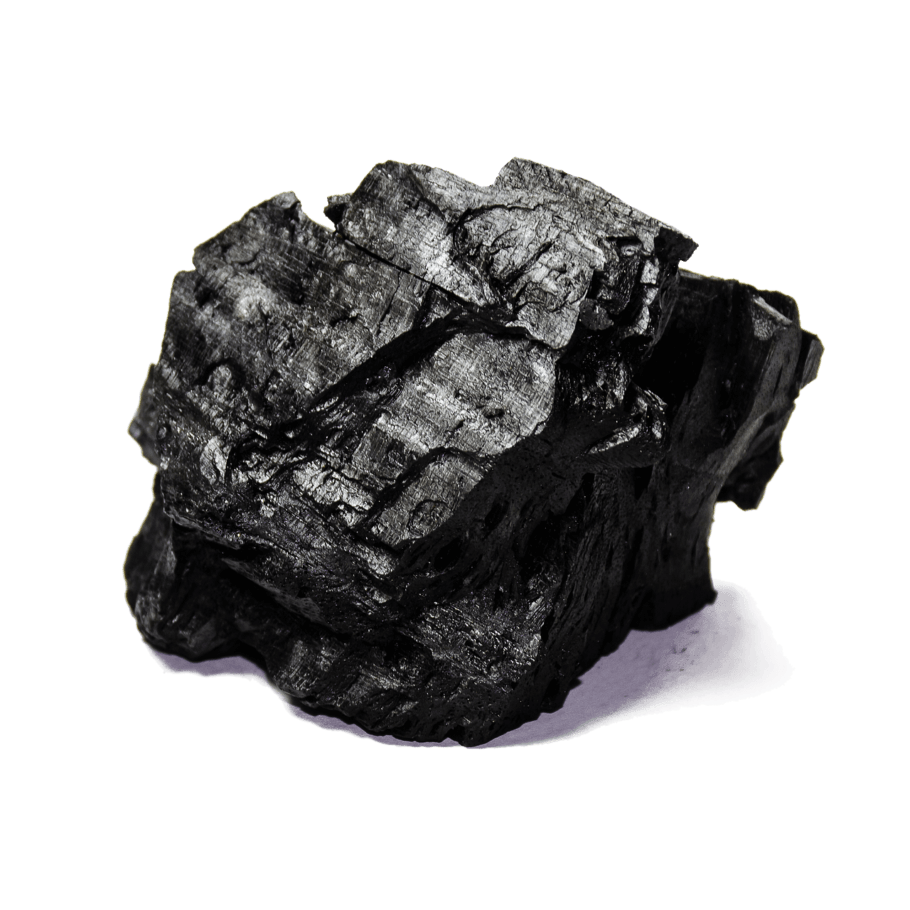
- Charcoal: Used to improve the soil, and boosts aeration and absorption. Thanks to its nature, charcoal also retains, filters and releases macro and micronutrients when the plants most need them. It’s also highly recommended as a thermal regulator, especially in areas with cold soils. Greater soil oxygenation promotes aerobic fermentation. The best way to add it is in pieces of approximately 1cm in diameter. Many people use bonfire ash instead of charcoal.
- Rice bran: Thanks to its high vitamin content, rice bran promotes the fermentation process. It provides nitrogen and other minerals such as K, Ca, P and Mg; and also B, Fe, Mn and Zn, as well as a high degree of hormonal activation.
- Common soil: It can account for one-third of the compost total volume. This soil has several roles, such as provide volume, uniformity and fluffiness to the medium. It promotes the reproduction of microorganisms and therefore the fermentation process. It also retains and filters nutrients, some of which are already in it. The use of clay soils is recommended, as it promotes humic and silicon compounds.
- Calcium carbonate: Its main function is to regulate the medium acidity during fermentation. It is also known as dolomite lime. If needed, you can replace it with rock flour.
- Water: It homogenizes the compost ingredients’ moisture content. And it also promotes microorganisms reproduction.
Before we see how it’s prepared, let’s clarify some important aspects that also apply to anaerobic Bokashi. The more ground the ingredients, the more effective the process and homogeneous the results. Water - or EM solution, or both - should be used only once, during the preparation of the organic matter mixture and according to the fist test (add water until you can form a "ball" and tighten it in your hand without dripping, even if it’s wet).
These recipes are merely guidelines with regards to the quantity of each ingredient. You can adjust them to obtain the desired amount of fertilizer, bearing in mind that, unlike traditional compost, once it’s ready Bokashi hardly loses any weight compared to the materials used at the beginning.
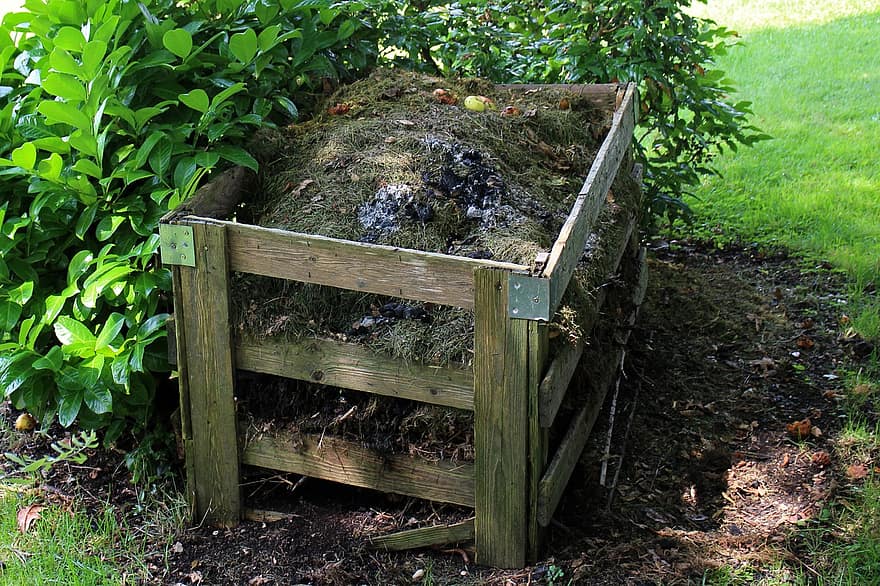
To make Bokashi you need the following ingredients:
- 20kg of soil
- 20kg of rice husks or chopped straw
- 20kg of chicken or cattle manure
- 10kg of ground charcoal0.5kg of rice bran
- 0.5kg of dolomite lime, rock dust or ash
- 0.5kg of Bokashi or virgin soil (or solid or liquid EM)*
- 0.1 litres of molasses, honey or panela
- 10g of bread yeast
- Water
*If available
There are several ways to make the mixture, but the first step it's always to dilute the molasses and the yeast in the water you will later use to hydrate the organic matter, warming it up to help with the dissolution. You can use the EM solution at this point. If you are not sure of how much water you need, it's better to make a highly concentrated solution and add water later to the mixture if needed.
You can mix all solid ingredients in a single heap and add the water as you turn it, so you are left with a smooth and hydrated mix. Another option is to first hydrate ingredient by ingredient, and then mix everything together until you get the smoothness you want. Finally, spread the mixture on a spot protected from the sun and the rain, and not higher than 140cm.
The temperature will rise quite fast (it can reach 70º; ideally, in this first phase, it should not go over 50-60º), and in 2-3 days, you’ll need to start turning the mix, properly stirring it up to 3 times a day. After the first week, the temperature will start to drop; from then on, you should only turn it once a day until about day 12, when the compost is ripe and resembles a greyish powdery sand at ambient temperature.
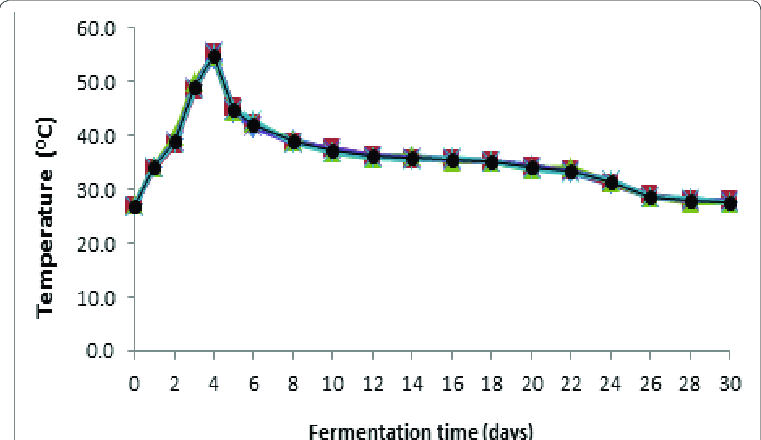
To speed up the process, you can gradually lower the heap from the start of the turning process (day 3) until it’s at about 30-50cm in height (no less) on day 8. As you can see, in 15 days you can have a considerable amount of 100% organic fertilizer of the best quality!
Anaerobic Bokashi
Very popular in Japan and Asia, it’s the most practical method for the home grower, who will only have to worry about getting the EM solution in order to promote and accelerate the fermentation process. Among its main advantages is the fact that you don’t have to turn the mixture over, and there’s also a lower contamination risk. You simply have to place it in an airtight container.
You can keep adding more organic material as you get it. If you don't have enough kitchen scraps for the amount of compost you need, you can use 2 sacks of rice semolina, 1 sack of soybean meal, 1 sack of fish meal, and a mixture of EM, water and molasses as inoculant.
As for the container, there are several options, though you should bear in mind that the fermentation process will produce liquids, which can be then collected, diluted in water, and used as an excellent plant supplement. The easiest way to do this is getting a bucket with a mesh to place the vegetable matter on top, and a tap at the bottom to collect the liquid. Some growers put the mixture into two sealed plastic bags, and place them in a spot away from the sun and the rain.
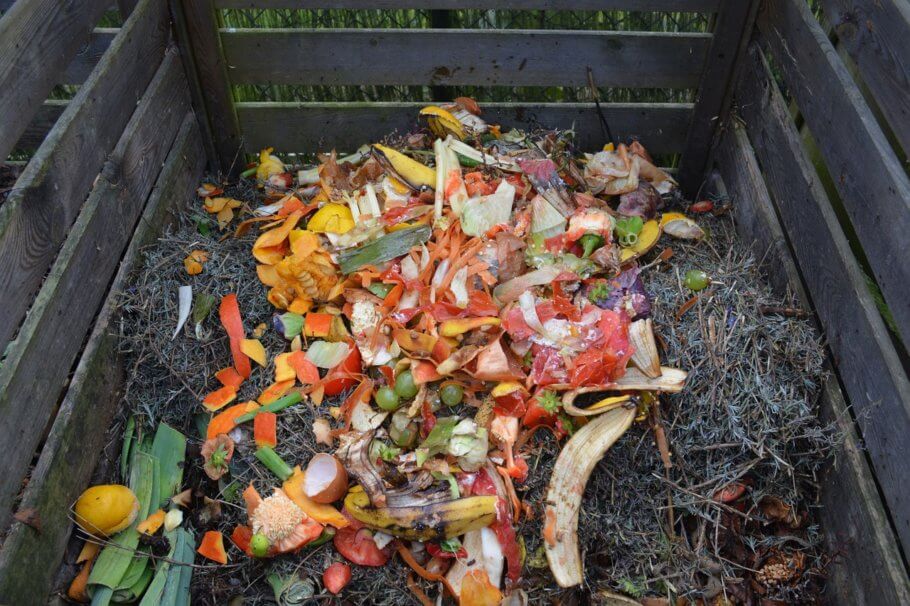
Without turning and simply letting the mixture rest, you will have a great Bokashi in 15-20 days or less, depending on the humidity and temperature, and the organic matter itself (the more ground, the better). To speed up this process you can keep squashing the mixture every few days, and cover it with a plate or tray to minimize the presence of oxygen. You must keep the container or bag tightly closed at all times, and only open them to add more organic matter.
In regards to the EM solution, you can find it in many garden centres, although very soon we will dedicate a whole article to these microorganisms, and show you several ways to prepare the inoculant mixture, both in liquid and solid form.
Application and Uses of Bokashi
When using this fertilizer, the most important thing to remember is that it’s preferable to bury it under the substrate than spread it on the surface. It is a fairly powerful fertilizer, so to avoid problems with the root zone, growers usually dig some holes to place the Bokashi, and then fill them with the chosen substrate. However, many growers mix it with the substrate or compost without any problems; it all depends on the ingredients used and the composition of the final product. Another reason for burying it deep is that the nutrients contained in Bokashi are not as rapidly absorbed as those in traditional compost, which is a totally decomposed material and is used as topsoil.
As you have seen, Bokashi can also be used to inoculate bigger productions of fermented compost, simply by adding it to the organic matter mixture. It is also an excellent contribution for producers of vermicompost, who usually add it to their compost bin full of worms to accelerate the composting process thanks to the Bokashi’s microorganisms.
You’ve seen all the advantages of making this interesting fertilizer; from environmental care to the harnessing of the waste we generate to nourish our soil and plants. As always, we encourage you to share your advice and experiences with all of us; it will be a pleasure to get back to you.
Happy growing!
Literature:
- El huerto familiar ecológico, Mariano Bueno
- Manual práctico de Bokashi, Jairo Restrepo
- Properties and Applications of an Organic Fertilizer Inoculated with Effective Microorganisms, Kengo Yamada, Hui-lian Xu
- Fermentation (Bokashi) versus Composting of Organic Waste Materials: Consequences for Nutrient Losses and CO2-footprint, Marlou Bosch, Anke Hitman, Jan Feersma Hoekstra
































































